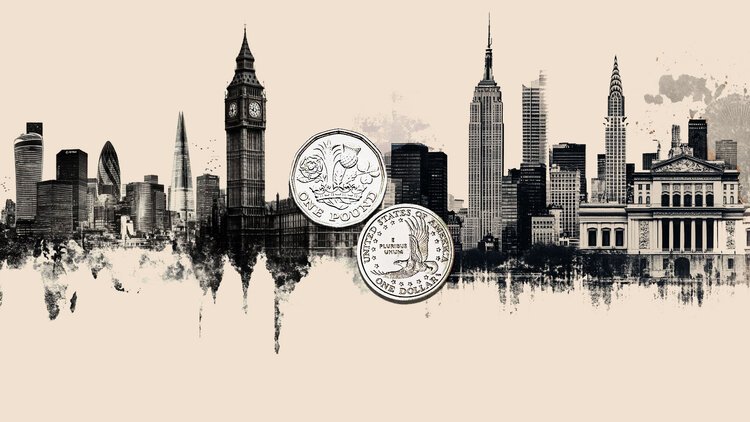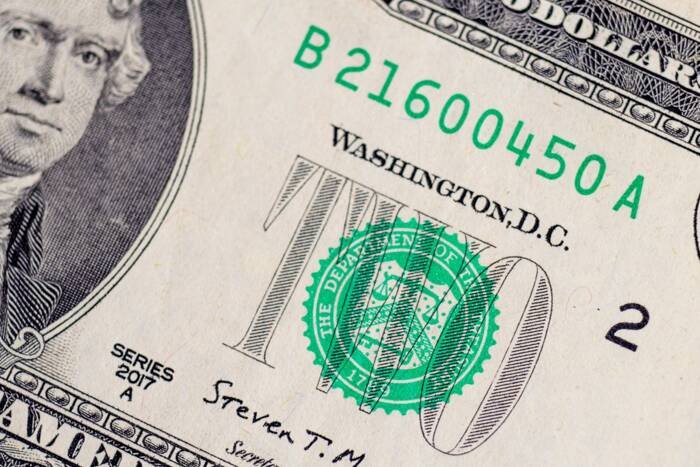The Pound Sterling (GBP) found fresh buyers once again near the 1.3250 area when compared with the US Dollar (USD), pushing GBP/USD higher toward the 1.3500 threshold.
Pound Sterling capitalizes on USD’s downfall
GBP/USD buyers returned with a bang in the past week after an initial struggle, as the USD lost its upside momentum and incurred heavy losses against its major currency rivals.
Earlier in the week, the Pound Sterling faced headwinds from renewed US-China trade tensions-led risk aversion and weak UK employment data.
The Office for National Statistics (ONS) showed on Tuesday, the UK Unemployment Rate rose to a four-year high of 4.8% in the three months to August, up from 4.7% in July. The Average Earnings growth fell to 4.7% in the three months to August.
Commenting on the jobs data, Bank of England (BoE) Governor Andrew Bailey noted: “Today’s labor market data backs my view of a softening labor market.”
However, the tide turned in favor of the pair midweek after the Greenback gave in to fresh concerns surrounding a protracted US-China trade row and the US government shutdown.
Moreover, doubling down on dovish Federal Reserve (Fed) expectations exacerbated the USD’s pain.
US President Donald Trump slapped an additional 100% tariffs on all Chinese imports and introduced strict export controls on US-made critical software starting November 1.
This came in response to China tightening its export controls on rare earths and related technologies, while barring its citizens from participating in unauthorized mining overseas.
Later in the week, China accused the US of exaggerating its rare earth export controls to stir panic, rejecting calls to roll them back.
Meanwhile, Fed officials, including Chairman Jerome Powell, continued to caution on the weakening US labor market, bolstering expectations that the Fed will lower rates twice by the year-end.
Markets priced in roughly a 95% probability of rate cuts at the Fed’s October and December monetary policy meetings, the CME Group’s FedWatch Tool shows.
Week ahead: Inflation reports to revive data drought
Following weeks of a data-dry spell from the United States (US) due to a protracted government shutdown, the focus will be back on the economic data as the Fed enters its ‘blackout period’ ahead of the October 28-29 monetary policy meeting.
The US Bureau of Labor Statistics (BLS) is set to release the September Consumer Price Index (CPI) data on Friday.
In the lead-up to the crucial US inflation data, investors will gain trading incentives from Monday’s Chinese third-quarter Gross Domestic Product (GDP) data and the British CPI report on Wednesday.
Thursday will feature the US Existing Home Sales, followed by Friday’s S&P Global preliminary Purchasing Managers’ Index (PMI) data from both sides of the Atlantic.
However, the main market mover on Friday will be the US consumer inflation data publication, which could provide hints on whether the Fed will deliver another rate cut this year after the expected October reduction.
Meanwhile, the delayed data from the US Department of Labor (DoL), BLS and the Census Bureau could be released in the upcoming week if the US funding is restored.
Besides, traders will continue to closely watch for incoming geopolitical and trade-related updates before placing fresh bets on GBP/USD.
GBP/USD: Technical outlook

GBP/USD buyers found strong support near the 1.3250 region and staged a solid comeback to challenge the critical resistance near 1.3500 once again.
In doing so, the pair recaptured the key 21-day Simple Moving Average (SMA) at 1.3424 on a daily closing basis on Thursday.
Meanwhile, the 14-day Relative Strength Index (RSI) crossed above the 50 level, pointing higher toward 52, at the time of writing.
These technical indicators suggest that the GBP/USD recovery is likely to extend in the upcoming week, with the rising trendline support-turned-resistance at 1.3600 in focus on acceptance above the 1.3490 supply zone. In that area, the 50-day SMA and the 100-day SMA close in.
Further north, the July 4 high of 1.3681 will be tested, followed by the September 17 high of 1.3763.
Conversely, a sustained break of the 1.3250 demand zone will call for a test of the 200-day SMA at 1.3198.
The August low of 1.3142 will be a line in the sand for GBP optimists.
Economic Indicator
Consumer Price Index (YoY)
The United Kingdom (UK) Consumer Price Index (CPI), released by the Office for National Statistics on a monthly basis, is a measure of consumer price inflation – the rate at which the prices of goods and services bought by households rise or fall – produced to international standards. It is the inflation measure used in the government’s target. The YoY reading compares prices in the reference month to a year earlier. Generally, a high reading is seen as bullish for the Pound Sterling (GBP), while a low reading is seen as bearish.






